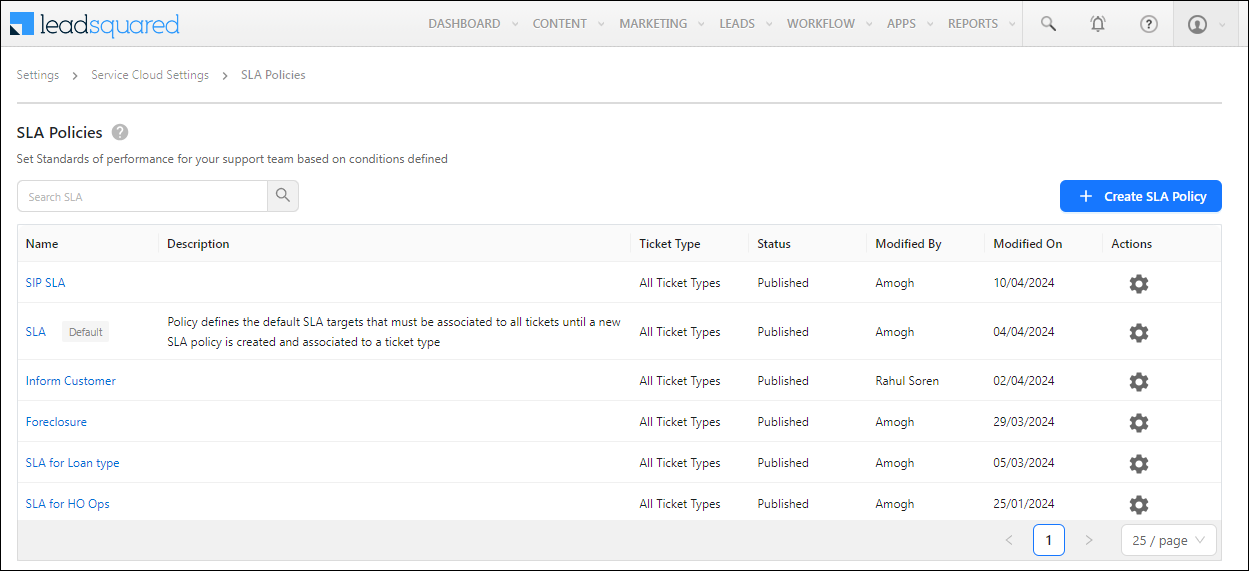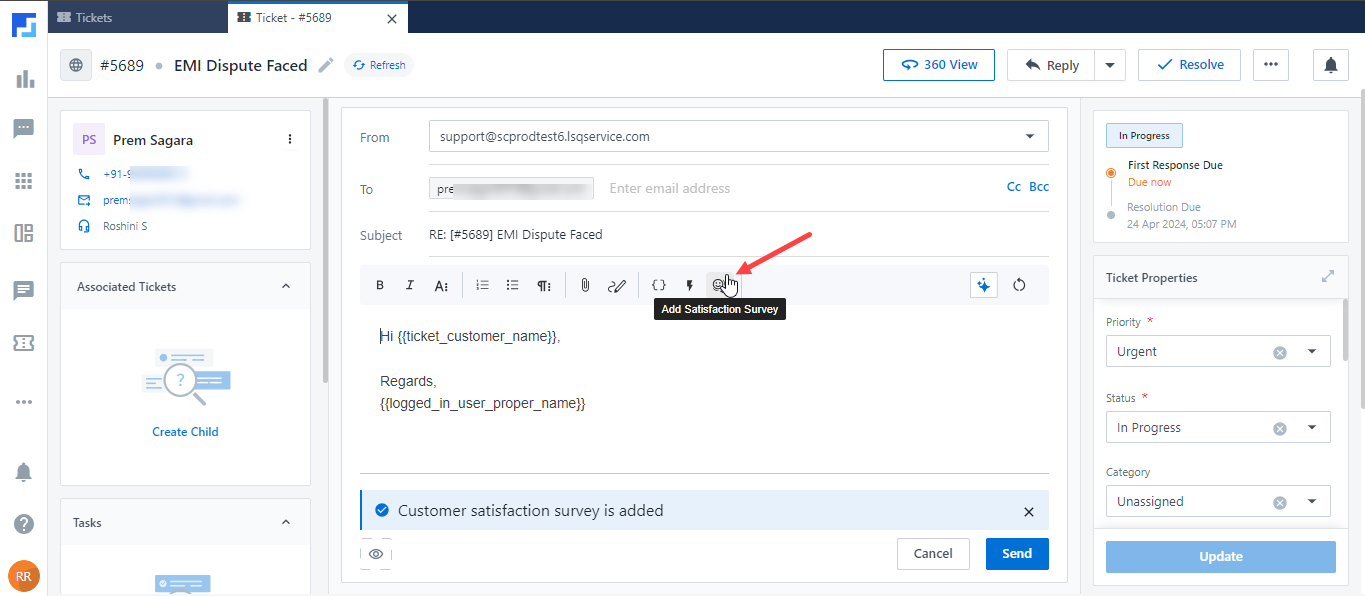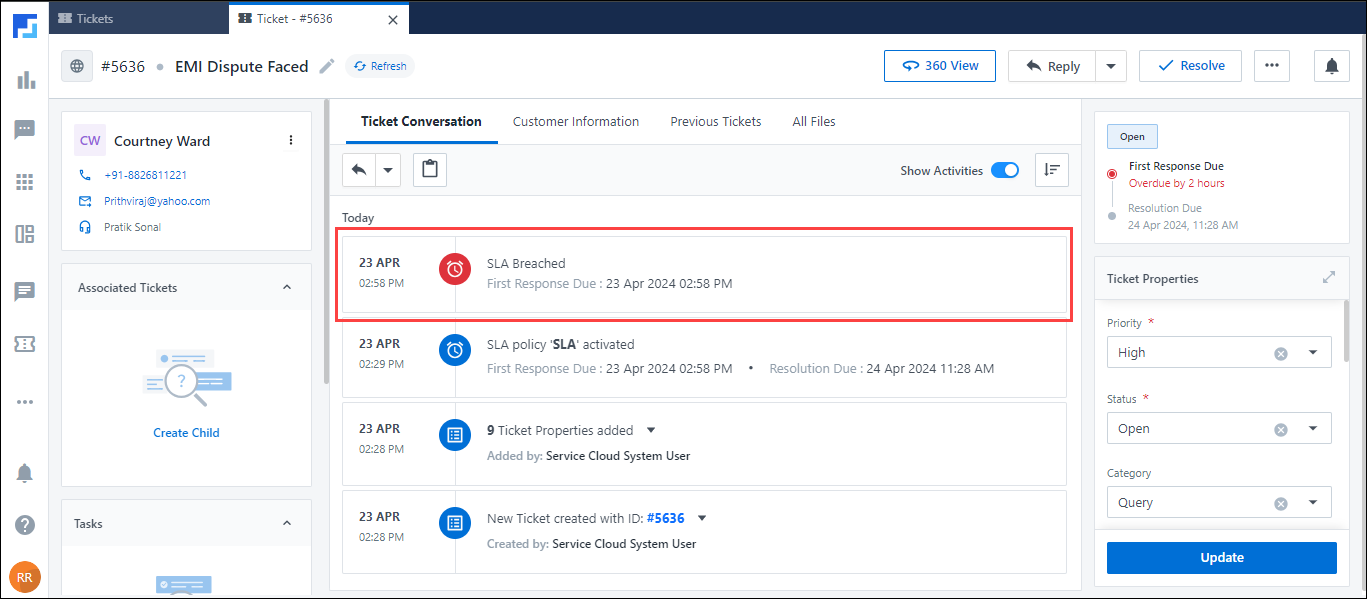What sets apart businesses that consistently deliver exceptional service from those that fall short? The answer often lies in a powerful yet frequently overlooked tool: Service Level Agreements (SLAs).
SLAs are the foundation of many business relationships and can impact customer satisfaction, retention, and overall business performance.
According to Gartner, organizations that have SLAs in place can see up to a 25% increase in customer satisfaction scores and a 20% reduction in service-related disputes.
Let’s dive into the key features of SLAs, the advantages of using SLAs, and the best practices to keep in mind while implementing an SLA for your business.
What is a SLA?
A Service Level Agreement (SLA) is a formal agreement between a service provider and a customer. It’s a detailed roadmap to success, outlining performance expectations, measurement criteria, and what both parties agree to.
An SLA goes beyond just what services will be provided; it sets clear, measurable standards for service quality, availability, and responsiveness.
SLAs are key to setting expectations and accountability. They provide a framework for measuring service performance and solving any issues that arise. By defining the terms of service, SLAs help build trust between service providers and customers, leading to long-term relationships and customer loyalty.
Types of SLAs
SLAs are designed to meet business needs. Knowing the types will help you choose the right one for your organization. There are three:
- Customer-based SLAs are for individual customers with unique needs, a customized solution for high-value partnerships. They are useful for businesses that offer specialist services or have customers with complex requirements.
- Service-based SLAs are for standard services like cloud storage or software subscriptions, a framework for multiple customers. This type of SLA is for businesses that offer the same service to many customers to ensure consistency of service across the customer base.
- Multi-level SLAs are for complex corporate structures, allowing different levels of agreement within one organization. These are useful for large companies with multiple departments or subsidiaries, each with their own service requirements.
A Technology Services Industry Association (TSIA) survey found 68% of companies use service-based SLAs, 22% customer-based SLAs and 10% multi-level SLAs. This reflects the diverse needs of businesses across different industries and highlights the importance of choosing the right type of SLA for your business model.
Creating an SLA
Creating an SLA involves several key steps, each essential to making the SLA work:
- Start with clear objectives that define what you want to achieve. These should be specific, measurable, achievable, relevant, and time-bound (SMART).
- Include performance metrics to measure success. These should be tied to your objectives and provide a clear view of service performance.
- Define roles and responsibilities to ensure accountability. The service provider and customer should know what they are responsible for under the agreement.
- Include review processes to ensure the SLA remains relevant over time. Regular reviews allow for agreement changes based on business needs or market conditions.
- Build in flexibility to allow the SLA to adapt to changing business needs. This could be provisions for renegotiation or amendment of the agreement under certain circumstances.
- Clearly outline the consequences of not meeting the service levels. This might be penalties, service credits or other remediation measures.
- Include dispute resolution procedures to handle any disputes that arise during the agreement.
LeadSquared’s Service CRM can help you create and manage SLAs. You can set up workflows to track different parts of your SLA, from performance metrics to review processes. The platform is flexible, so you can change your SLAs as your business needs change, and they remain relevant and effective over time.

SLA Metrics
SLA metrics show if your service is meeting expectations and where you need to improve. Some of the key metrics are:
- Response Time measures how quickly you respond to customer queries or issues. This is key to customer satisfaction and can impact how customers perceive your service.
- Resolution Time tracks how long it takes to resolve problems completely. Problem resolution is critical to customer trust and loyalty.
- Service Availability is the percentage of time your service is up and running. This is particularly important for cloud services or mission-critical applications.
- Customer Satisfaction measures how happy your customers are with the service. This can be measured through surveys, feedback forms or other customer input mechanisms.
LeadSquared’s service CRM provides you with automated customer survey features that collect feedback on customer satisfaction and give the customer a chance to rate their overall experience when interacting with your agents. This survey helps you understand the effectiveness of your agents when dealing with customers and provides insights into which customer support areas need improvement.

- First Contact Resolution (FCR) Rate measures the percentage of customer issues resolved on the first contact. A MetricNet study found that top performing service organisations have an FCR rate of 74%, compared to the industry average of 70%.
- Error Rates track the frequency of errors or defects in service delivery. Monitoring this metric can help you identify areas to improve your processes.
- Mean Time Between Failures (MTBF) measures the average time between system failures or critical issues, giving you insight into your service’s overall reliability.
LeadSquared’s Service CRM has the tools to track and analyze these metrics. Its advanced analytics allow you to generate detailed reports on your SLA performance so you can see trends, identify potential issues before they become problems, and make data-driven decisions to improve your service delivery.
SLA Management Tools
Managing SLAs is more than just setting metrics and hoping for the best. Modern SLA management tools can make the process easier, provide real time insights and automate many parts of SLA tracking and reporting. LeadSquared’s Service CRM is at the cutting edge of SLA management technology and has a full suite of features to help you improve your SLA:
- Intelligent ticketing routing issues to the right team member quickly, reduces response times, and improves first-contact resolution rates.
- Multi-level escalation prevents issues from being missed and automatically escalates issues that are at risk of breaching SLA.
- Real time dashboards give managers at a glance performance monitoring, so they can see what needs attention.
- Customisable alerts notify the relevant team members when SLA thresholds are being reached or breached so they can proactively manage service levels.

- Reporting tools generate detailed insights into SLA performance so you can see trends and areas to improve.
- Integration allows LeadSquared to connect to other business tools, allowing you to manage customer relationships and service delivery from a single platform.
By using these features, you can ensure you’re not just meeting but exceeding your SLAs. LeadSquared’s Service CRM automation and insights can turn SLA management from a time-consuming reactive process into a proactive service excellence strategy.
Benefits of SLAs
Implementing SLAs can transform your business in many ways, delivering benefits that go far beyond service level maintenance:
- They increase customer satisfaction by setting clear expectations and delivering on them. Customers are happy When they know what to expect and those expectations are met or exceeded.
- Service quality improves through regular performance reviews and a commitment to meet agreed-upon standards. Measuring and reporting on service levels often leads to a culture of continuous improvement.
- SLAs bring accountability by defining roles and responsibilities for both parties. This clarity prevents misunderstandings, and everyone knows what’s expected of them.
- They streamline communication by setting clear channels for reporting and feedback. SLA reviews provide a structured opportunity for open dialogue between service providers and clients.
- SLAs help with risk management by defining procedures for service disruptions. By planning for potential issues in advance you can respond better when problems arise.
- Operational efficiency increases as SLAs help identify and eliminate bottlenecks in service delivery. The data gathered from SLA tracking can highlight inefficiencies in processes or resource allocation.
- Well-implemented SLAs can be a competitive advantage and differentiate you from the competition. It shows a commitment to service quality that sets you apart.
The benefits of SLA implementation are substantial. Aberdeen Group found that companies with well-implemented SLAs saw a 26% year-on-year increase in customer retention rates, and those without saw a 1% decrease. That’s a big difference.
LeadSquared can help you get those benefits faster and easier. By giving you the tools to create, track, and manage your SLAs, you can focus on delivering great service without getting bogged down in administration.
Best Practices for SLA Implementation
To get the most out of your SLAs, consider these best practices:
- Be clear and specific in your language; avoid jargon that might confuse either party. The SLA should be understandable by all stakeholders, not just technical experts.
- Set realistic targets based on historical data and industry benchmarks. It’s good to be ambitious but unrealistic targets can lead to frustration and disappointment.
- Involve all stakeholders in the SLA creation process to get buy-in and coverage. This includes not just management but also the front-line staff who will be delivering the service.
- Include provisions for reviewing and updating the SLA as the business changes. Business needs evolve and your SLA should evolve with them.
- Focus on the customer and align SLA metrics with their priorities. Remember that the end goal is to deliver value to your customers.
- Use technology to track and manage your SLA performance. Tools like LeadSquared’s Service CRM can automate much of the tracking and reporting process so your team can focus on service delivery.
- Review your SLAs regularly to ensure they’re relevant and effective. An ITSM.tools survey found that 78% of organizations review their SLAs at least annually.
- Celebrate successes and learn from failures. Use your SLA performance data to recognize team members who meet or exceed targets and identify areas where additional training or resources are needed.
- Ensure your SLA aligns with your overall business strategy. The agreement should support and reinforce your business goals.
- Communicate SLA performance internally and to your clients. Transparency builds trust and shows your commitment to service excellence.
LeadSquared’s Service CRM can help with many of these best practices. The user-friendly interface makes it easy to create clear and specific SLAs, and the platform’s analytics capabilities let you set realistic targets based on historical data.
Automated reports mean you can review and update regularly, and customizable dashboards keep the focus on customer-centric metrics. By using LeadSquared’s features, you can implement these best practices better and get stronger, more beneficial SLAs.
Conclusion
In today’s competitive business world Service Level Agreements are essential to success. They’re not just documents, they’re a commitment to excellence and a roadmap for improvement. By implementing SLAs and combining them with modern management tools like LeadSquared’s Service CRM, you can deliver better service, build stronger customer relationships, and grow your business.
Think about how a well written SLA with the right technology could transform your service management and business. With the right approach and tools, you can turn your SLAs from administrative overhead into a strategic asset that drives customer satisfaction, operational efficiency, and business success.
The journey to great service starts with a well-written SLA and the right management tools. LeadSquared’s Service CRM has the features and flexibility you need to create, implement and manage effective SLAs. Use its power to make your service commitments a competitive advantage.









